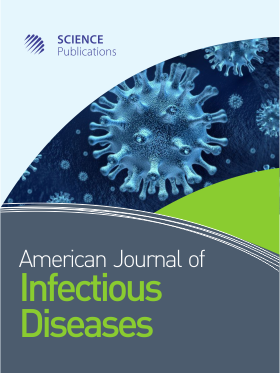Effect of Antioxidant Vitamins C and E Supplementation on its Plasma Levels and on Lipid Profile in Pulmonary Tuberculosis Patients
- 1 Unit of Clinical Laboratory Services, China
Abstract
Problem statement: Patients with active pulmonary Tuberculosis (TB) are malnourished as indicated by reductions in lean mass, anthropometric indices and micronutrient status. Supplementation with vitamins may prove to be beneficial. Limited information is available on the supplementation of vitamin C and E in pulmonary TB patients. Hence, the present study was undertaken to address the question whether any benefit could be demonstrated with supplementation of antioxidant vitamins C and E and in combination in pulmonary TB patients. Approach: A five arm study was carried out for a period of 6 months in which the normal healthy volunteers served as control group and the sputum positive category I pulmonary TB patients served as the treatment group. Three out of the four patient groups received the antioxidant vitamin supplementation of either vitamin C, vitamin E or in combination along with ATT, whereas fourth group received ATT alone. Plasma concentrations of vitamin C and E were analyzed pre, during and post Anti-Tuberculosis Therapy (ATT) to establish the role of oral supplementation of these vitamins. Sputum culture was also done at all the three times points for Mycobacterium tuberculosis. To study the possible interaction and influence of the supplemented vitamins on LDL-C and HDL-C and other lipid parameters a lipid profile was carried out. Results: (1) All the patients in the treatment groups turned sputum at the end of 2 months of treatment. (2) There was a significant improvement in the body weights of the patients upon supplementation with antioxidant vitamins. (3) There was a significant increase in the of plasma ascorbic acid and α-tocopherol levels after 6 months of treatment in the vitamin C and vitamin E supplemented groups. (4) The HDL-C levels increased significantly in the antioxidant vitamin supplemented groups. (5) Lower levels of LDL-C were observed in the antioxidant vitamin supplemented groups when compared to the un-supplemented group. Conclusion: The plasma concentrations of ascorbic acid and α-tocopherol increased significantly after their dietary supplementation. The increase could also be due to the synergy exhibited by both the vitamins. Vitamin C and vitamin E supplementation influenced the lipid profile by increasing the serum HDL-C, improving the total cholesterol levels and decreasing the LDL-C concentration in the antioxidant vitamin supplemented groups.
DOI: https://doi.org/10.3844/ajidsp.2009.263.272

- 5,780 Views
- 3,858 Downloads
- 5 Citations
Download
Keywords
- Pulmonary TB
- vitamin C
- vitamin E
- antioxidants
- mycobacterium tuberculosis
